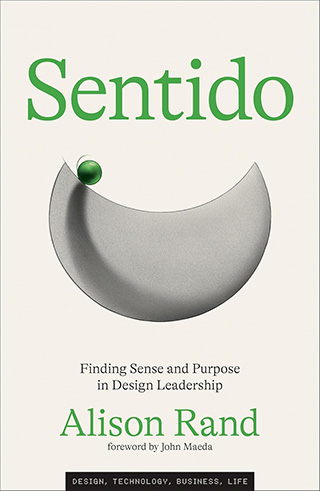For Women in the Workplace, the Struggle Is Real

Cuando los de abajo se mueven los de arriba se caen.
(When those at the bottom move, those at the top fall.)
—Ángel Ganivet
Often in your career journey, you question yourself. Doubt your abilities, capabilities, and experience, and question why you are even there. Everyone talks about imposter syndrome, and everyone experiences it. But the experience of imposter syndrome is different when it is felt through the lens of day-to-day microaggressions, gaslighting, and very real exclusion without clarity. When you are kept out of rooms, literally not invited to the party, knowing people behind those walls are manipulating your work, exploiting what you have built for their own personal gain.

While many of my past experiences weren’t always explicit, the explosive culmination of that cognitive dissonance began one Friday in 2022 when I received word I was invited to write “Sentido” and then, just days later, was let go from my job. I experienced my career’s most significant height and lowest low within three days. Balancing that dissonance and sorting through those emotions knocked the wind out of my body and sails.
They say people’s top three most traumatic experiences are death, divorce, and loss of income, so I found myself grieving. I am fortunate enough not to get too mired in depression, but I definitely allowed myself to feel depressed. There is no light in the middle of the tunnel. I slept a lot; I didn’t sleep at all. I got extremely sick. I worried, I worried, I worried. I did a historical play-by-play of my entire career every night at about 3:00 a.m., replaying everything from my last experience a million times. I vacillated between believing it was a “blessing in disguise” to saying, “Fuck silver linings.”
After a significant amount of time without the stability of a regular corporate paycheck, I had the chance to reflect on my experience in written word and many discussions with incredible women about our professional trajectories, individually and collectively. These conversations become more salient as we reach the midlife tipping point and have provided a North Star when encountering biases that are even more acute.
There is no light in the middle of the tunnel. I slept a lot; I didn’t sleep at all. I got extremely sick. I worried, I worried, I worried.
While searching for work, I received a startling piece of advice from a recruiter. First, she suggested I downplay my experience because my C-level titles might intimidate potential employers. Then she advised me to shave a decade off my résumé to disguise my age — suggesting I list 15 years of experience instead of 25. Can you imagine?! This advice was deeply disheartening: downplay my extensive experience and even adjust my résumé to appear younger. This was not just about adjusting to a new job market after fighting what felt like so many battles around age and race, and now, a clear reflection of a pervasive ageist attitude that values youth over experience.
After dedicating decades to climbing the corporate ladder, it was disheartening to hear that I might now be seen as too old rather than well-experienced. These conversations made me curious about which industries truly value the maturity and experience that comes with age, and where your expertise makes you more essential, not less. Where the wealth of knowledge you accumulate over the years is seen as an asset, and where the confidence that comes from caring less about the small stuff is appreciated.
As life expectancies rise, the conversation around aging, especially for women in the workplace, needs to evolve more quickly. There are approximately 44 million women in the United States alone in midlife, and that number is rapidly growing with millennials coming into it. Reframing aging from a winding-down period to one of opportunity, growth, and continued contribution will shift the perspective around women and broader workforce dynamics. These years can also be a prime time for career advancement — pivoting into new roles or industries. Many women (including myself) are experiencing a renewed ambition to make this phase of life count in a more meaningful way. We did our time; (some of us) raised our kids, got married, got divorced, built careers, and navigated our parents’ health issues as well as our own.
The concept of renewal implies reawakening our sense of purpose, motivation, and potential, especially as we face changes or challenges. At its core, the idea of renewal prompts us to reengage with life in a deeper, more intentional way. Renewal should be seen as an expected stage in one’s career or personal growth. Less about starting over, and more about evolving. Key life moments — related to age, family, or world events — often catalyze self-renewal. If we frame these as natural checkpoints for reflection, growth, and perhaps redirection, we can normalize career or personal changes.
For women navigating careers, renewal generally emerges not as a tidy progression but rather as an intentional return to purpose in an environment that often undervalues our individual journeys. Midlife, or any career midpoint, holds potential for radical realignment. Reshma Saujani says in her book “Pay Up: The Future of Women and Work (and Why It’s Different Than You Think,” “We don’t need experts to tell us what we already know about our reality”; we are underpaid, overworked, overlooked, marginalized, and eventually cast aside. This is essentially where I landed after 25 years and being exhausted. What I care most about now is the embodiment of every woman ever dismissed to see some version of themselves in my story, and hope that it gives them the strength to do something.
So what does it mean to hold space for women and their stories, and actualize the work? Fourth-wave feminism teaches us to embrace the intersectionality of our experiences, celebrate them, and allow those beautiful, unique experiences to create a decentralized unit of collective solidarity. The collection of the individual is where we can find comfort, and while not everyone needs to be an activist, building safe spaces for discovery and growth is critical. In these spaces, we can leverage our collective consciousness to create a ripple, a tide, a movement. When those below move, those above come tumbling down — a mantra for people fighting for justice. This new wave of feminism looks different. Of course, we have our foremothers to thank for giving us a platform from which to evolve it. From movements such as Time’s Up and Black Lives Matter to the Working Families Party, we see a new version of leadership emerging. One in which many parts make the collective whole, uncovering and calling out systematic oppression, speaking truth to power while simultaneously fighting the individual battles. In the past, I had found myself thinking, How can they actualize change without someone leading the way, without obvious leaders? Watching, reading, and learning, I understood that approach is critical to their success. Decentralized leaders, organizers, activators, and everyday foot soldiers are doing the work. What it takes to dismantle parts of and build a system with a stronger foundation requires a newfound mindset coupled with sustainable solutions.
For women navigating careers, renewal generally emerges not as a tidy progression but rather as an intentional return to purpose in an environment that often undervalues our individual journeys.
We talk about change all the time in my own field, Design, being changemakers and agents of change — at scale. All the catchphrases. But what it looks like to actualize change is quite different. I have written and given talks about what it takes to implement change. Looking back, I have realized that any “step” in a predefined change management model only works if there is an appetite to accept the approach you are trying to serve.
As a woman, you can go through each step and be met with reproach even if you follow the effective frequency rules of seven times before the information is ingested. This is it! This is the thing! When you believe you have a voice, follow all the rules, and do it their way with your “special twist” — the one you have been hired for, but having all the answers, being buttoned up or buttoned down, or whatever they tell you that you need to be more or less of will only lead you to repeatedly replay physicist Albert Einstein’s definition of insanity: “doing the same thing over and over again and expecting different results.”
Now layer in intersectionality. My mother insisted on having me continuously check the “white” box for any form that asked to define my race and ethnicity. I never did, and we would argue back and forth about it. I can almost hear her saying, “Why do you have to make everything so much about being Puerto Rican?” I can fully understand her experience; she did everything to give me and my sister the leg up that she didn’t have. And we have come a long way, don’t misunderstand me, but we have much more work to do. Until leadership starts actualizing all of that talk, it’s up to us to make waves — a position that has rarely made me popular, but one I have become much more comfortable with. The unfortunate irony is that it won’t actualize unless we do the work. En nuestras manos esta el cambio.
Alison Rand is a seasoned leader in design and organizational culture transformation and a passionate advocate for women’s health. She is the author of “Sentido,” from which this article is excerpted.



